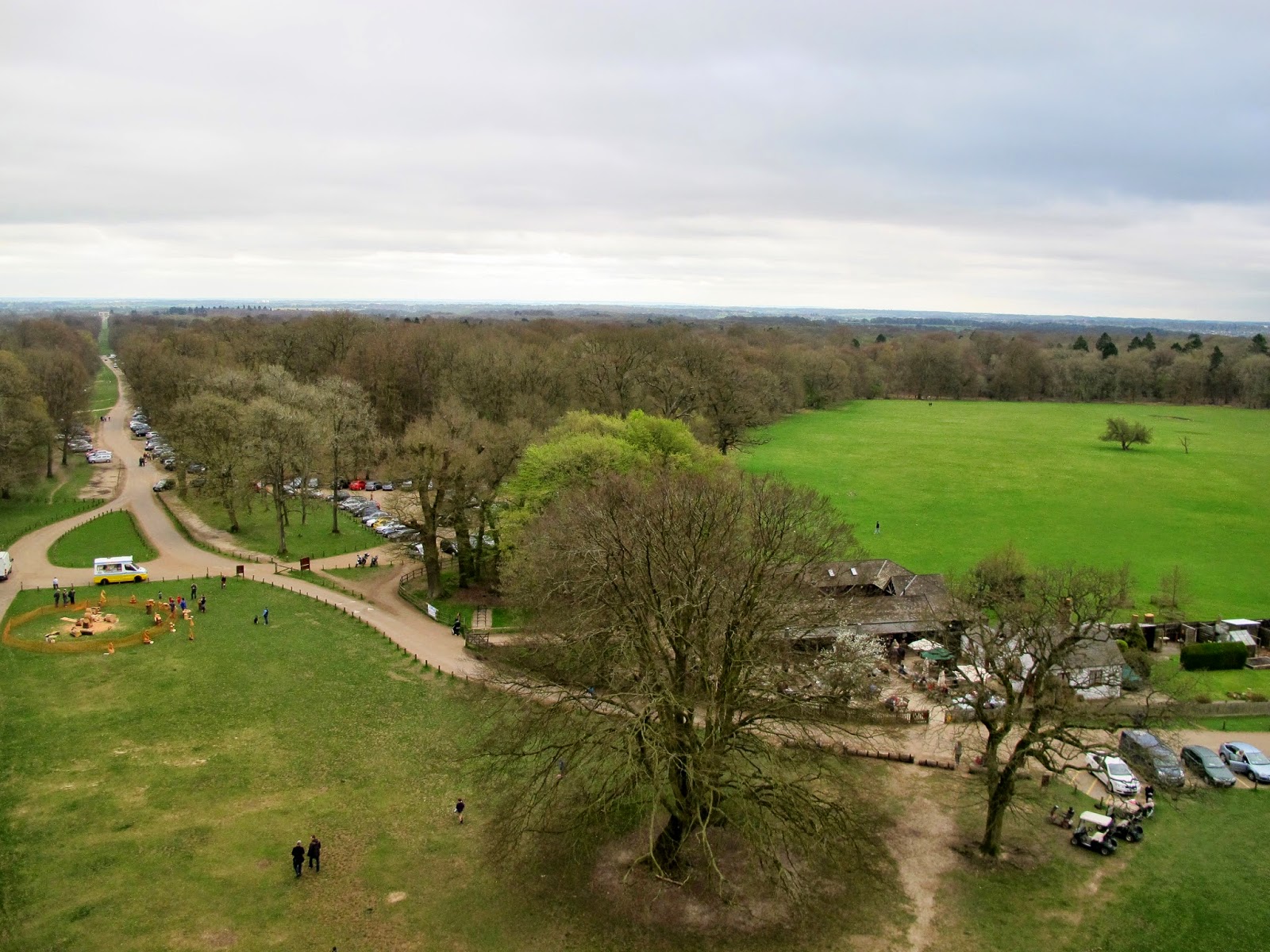The Ashridge Estate and Ivinghoe Beacon
I have a big trekking trip booked for this summer, therefore it’s really
important that I get out walking as much as possible. As I’m recovering from a
hip injury caused by overtraining, and now also recovering from whiplash after my car was crashed into, I
have to be sensible when it comes to my return to exercise.
Taking things too easy is very
frustrating for me – don’t get me wrong, I love to take it easy sometimes. But othertimes I want to be able to just get out there and get the adrenaline flowing!
Fortunately, I currently live
near to the Chilterns Area of Outstanding Natural Beauty (AONB), the North
Wessex Downs AONB and the Dunstable Downs (part of the Chilterns). This is an
area of rolling chalk downland with lots of wildlife and beautiful views and a
great many footpaths, making it a great area to use for my return to
long-distance walking. The last couple of weekends we have therefore headed out
on easy longish walks so I can begin to build up my walking fitness.
Yesterday we began our walk in
the picturesque village of Aldbury. This looked like a ‘proper’ southern
English village; it had an old fashioned red phone box and post box, beautiful
cottages, a pretty and well-kept church and a lovely duck pond in the centre.
From our start point we walked up
the hill through woods to the Ashridge Estate, a large estate of woodland, parkland
and downland run by the National Trust.
 |
| Spotting pheasants on the way. |
Near the visitor area there we saw a
chainsaw sculpting display taking place, and stopped to watch for a little
while.
 |
| Richard Balaam ~ Mr B's Chainsaw Carving |
Then we carried on, walking all
the way through the woods. The trees were mostly bare and the beautiful
woodland flowers were little pops of colour amongst the brown and green of the
woodland floor.
 |
| Gorse |
 |
| Wood Sorrel |
We continued walking until we
left the woods behind and were out in open downland. The ground was gentle
rolling hills with fields of rape noticeable as their yellow flowers coloured
the landscape. Ivinghoe Beacon is a prominent hill in this area, although the
countryside is so gentle that its elevation is just a mere 233m. Its prominence
means that it was a beacon site in ancient times, from where a signal could be
shown for great distances to give warnings in times of crisis.
From the Beacon you can easily
see across to the Whipsnade White Lion, cut out of the turf to display the white
chalk below, in the same way as the more famous chalk carvings such as the Cerne Abbas Giant or the Long Man of Wilmington,
although the Lion is
obviously much more recent. Created in 1933 for the Whipsnade Zoo,
apparently during World War 2 it was all covered up so that it wouldn't
provide a landmark for air raids.
The open rolling landscape also creates ideal conditions for model aeroplane enthusiasts. Someone was flying
their model glider as we walked past, then from the other side we also saw a
real glider being towed up by a light aircraft.
 |
| Model... |
 |
| ...and real! |
Dropping down again from the
Beacon, we walked back through the fields of rape and up the hill again back
towards the Ashridge Estate visitor centre.
On the way we saw three red
kites, two of them attacking the other. I have never seen this behaviour
before, although I see red kites almost every day where I live. I have posted a
question to see if I can find out more.
Edit to add: The RSPB, who I asked about this, came back to me with this answer: "Apparently the fact it was three red kites makes it likely to be an established pair seeing off an interloper. In the winter, red kites are social and at that time of year they are tolerant of each other. In the spring and summer they become less tolerant, especially of lone birds they don't know. Neighbouring birds who are familiar (red kites nest about a kilometer apart) would not be attacked. But a strongly-bonded pair (red kites will stay with the same mate year after year) would see off a single strange bird. If it is a female, the female in the pair would lead the attack, and if the strange bird is a male, the male in the pair will take the lead." This fits in with what I saw, as if they were fighting for a mate then you would expect to see 2 birds chasing the third while fighting with each other, but it was definitely 2 birds working together to fight the third, so I reckon that's the mystery solved!
Edit to add: The RSPB, who I asked about this, came back to me with this answer: "Apparently the fact it was three red kites makes it likely to be an established pair seeing off an interloper. In the winter, red kites are social and at that time of year they are tolerant of each other. In the spring and summer they become less tolerant, especially of lone birds they don't know. Neighbouring birds who are familiar (red kites nest about a kilometer apart) would not be attacked. But a strongly-bonded pair (red kites will stay with the same mate year after year) would see off a single strange bird. If it is a female, the female in the pair would lead the attack, and if the strange bird is a male, the male in the pair will take the lead." This fits in with what I saw, as if they were fighting for a mate then you would expect to see 2 birds chasing the third while fighting with each other, but it was definitely 2 birds working together to fight the third, so I reckon that's the mystery solved!
 |
| You can see gaps in the feathers of the poor victim! |
Returning to the main visitor
area, we saw that the Bridgewater Monument was now open to visitors. According to
Wikipedia, the Bridgewater Monument was “built in 1832 in memory of Francis
Egerton, 3rd Duke of Bridgewater (1736–1803), ‘the father of inland navigation’.
It is 108 feet (33 m) tall, with 172 steps inside, designed by Sir Jeffry
Wyattville in a Doric style. It overlooks the village of Aldbury and the Grand
Union Canal. It was built away from Ashridge House as his mother wanted
"not to see or be reminded of my infernal son".”
 |
| The Bridgewater Monument |
Our National Trust membership
cards had arrived the previous day, so we showed these to get free entry to the
Monument and took in the views from the top.
Satisfied, we came back down
again and headed to the visitor centre restaurant. After all, if the
opportunity is there then it would be silly not to finish a country walk
without a cream tea!













No comments:
Post a Comment